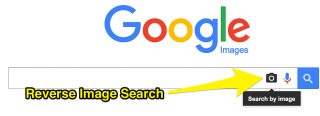www.CreativeJapan.net
An Eastern Perspective on Creating our SelvesWhy Use Image Search?
Image searches are quickly becoming part of everyday life. We use them to look at the latest fashions, find family or friends, or learn the name of a snazzy car we saw on the street. No longer do we have to wonder about anything. Simply snap and upload a picture to one of a dozen image search sites or apps.
How Does it Work?
Most tech savvy people are familiar with image searches. It is a specialized search used to locate digital images. There are several ways to conduct an image search.
- Image meta search – search of digital images based on metadata including keywords, text, etc.
- Content-Based Image Retrieval (CBIR) – the application used colors, shapes, and textures to identify images rather than relying on keywords and text.
In simple terms, an application or website can use algorithms to identify parts of a photograph and relate them to like content online. The system takes the guesswork out of attempting to find a person or item using keywords. For example, if you see a photograph on a website and want to learn more about the item, you can use an image search to get the name, photographer, or other important information. If a dress in a store window catches your eye, you can take a photo and perform a search that will tell you the name of the designer or other stores in your area or online that carry the item. The goal of many image search companies is to allow their users to search items via pictures rather than words, which may result in irrelevant answers.
Uses
Aside from identifying a piece of clothing, image searches can be beneficial for other reasons. Image searches can help you to:
- Locate the source of an image
- Find a higher resolution version of the image
- Get links to web pages where the image appears
- Locate the content creator
- Get more information about the image
- Search identity of persons online
- Find products and services
- Search artwork
- Research travel destinations
Sites
Just as iPhone phone number trace services continue to expand, image search developers continue to create bigger and better search engines to entice users to buy their products. Image search engines have recently enabled extensions to be added to browsers to make searching even easier. One click of a button can net the user information on products all over the Internet. Current extensions include Noobox for Chrome and “Search by Image” for Firefox. Each allows you to right-click on an image and choose between different reverse-image tools.
Some popular sites:
Google Images
Google’s Search by Image allows users to search for images by uploading an image retrieved from a website or by entering an image URL. The system compares the image with billions of other images located in Google’s databases before returning results.
Google Lens
Google has released a new way to search images. The new app for Android and IOS utilizes a powerful search engine to give users information on items around them. Not only does it identify the image, but adds relevant data that might be of interest to the user. This app is similar to Google Goggles.
TinEye
TinEye is a top search engine that specializes in reverse image searches. The user submits an image to the app, and then TinEye creates a “unique and compact digital signature or fingerprint” of the image before matching it to like images.
Pinterest is at the forefront of the image search field. In 2014, it acquired VisualGraph and introduced the ability to conduct image searches on its site. By using reverse image search technology, Pinterest can extract features from fashion items, e.g., pants, shoes, bags, dress, glasses, jewelry, shorts, swimsuits, and offer product recommendations on items that are similar.
eBay
eBay ShopBot uses a reverse image search to locate products by interpreting a user’s uploaded photo.
Yandex
Russia’s answer to Bing’s search engine will often give comprehensive results although they tend to be more similar than exact in identifying items.
Mobile Searches
The best image search engines work well on a desktop or laptop computer, but are often lacking when it comes to mobile devices. The upload feature may be disabled, or the pictures will not upload. There are some image search engine titans who are building search features into apps to make the process less painful. Until then, users may have to try their luck, use the desktop version of the sites or turn on their computers.
Free or Pay?
Many image search engines are free, but there are some that charge a small fee, either to search a specific item or as a monthly membership. Read the fine print before you search to avoid any surprises.
Posted in: Searching For You | Tags: android, google, image search, ios, pinterest, reverse image search, tineye, yandex
